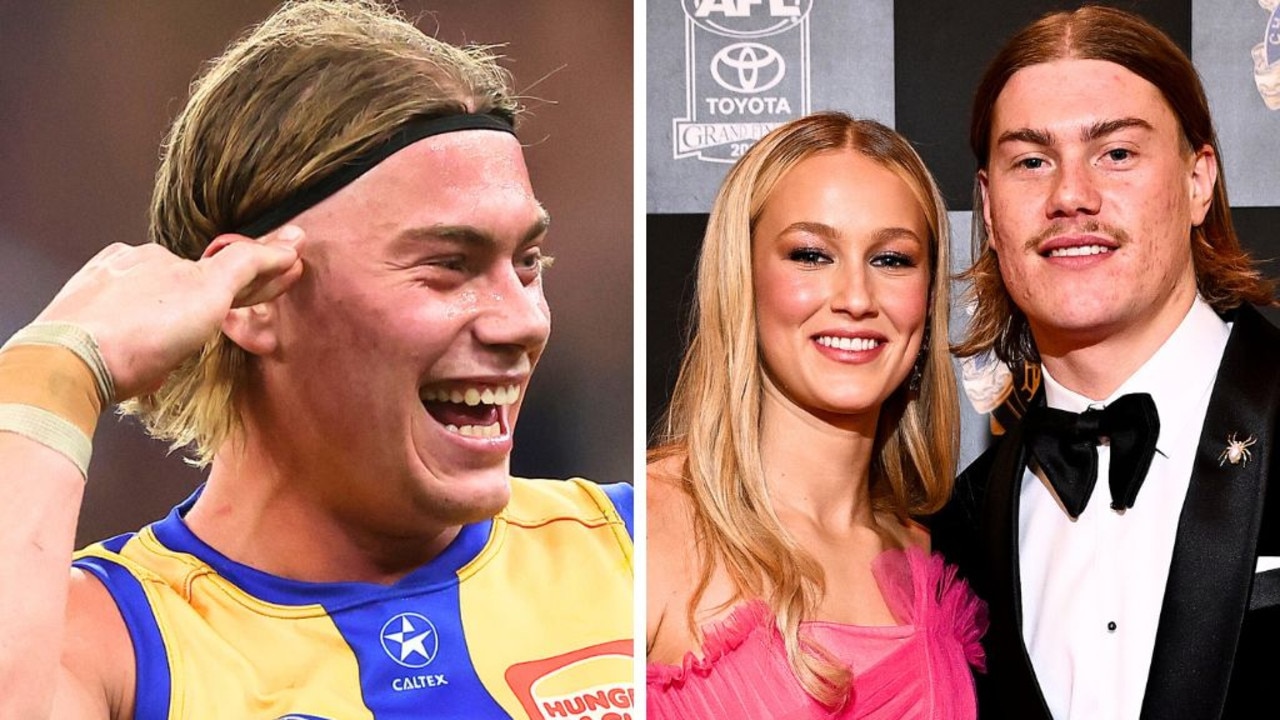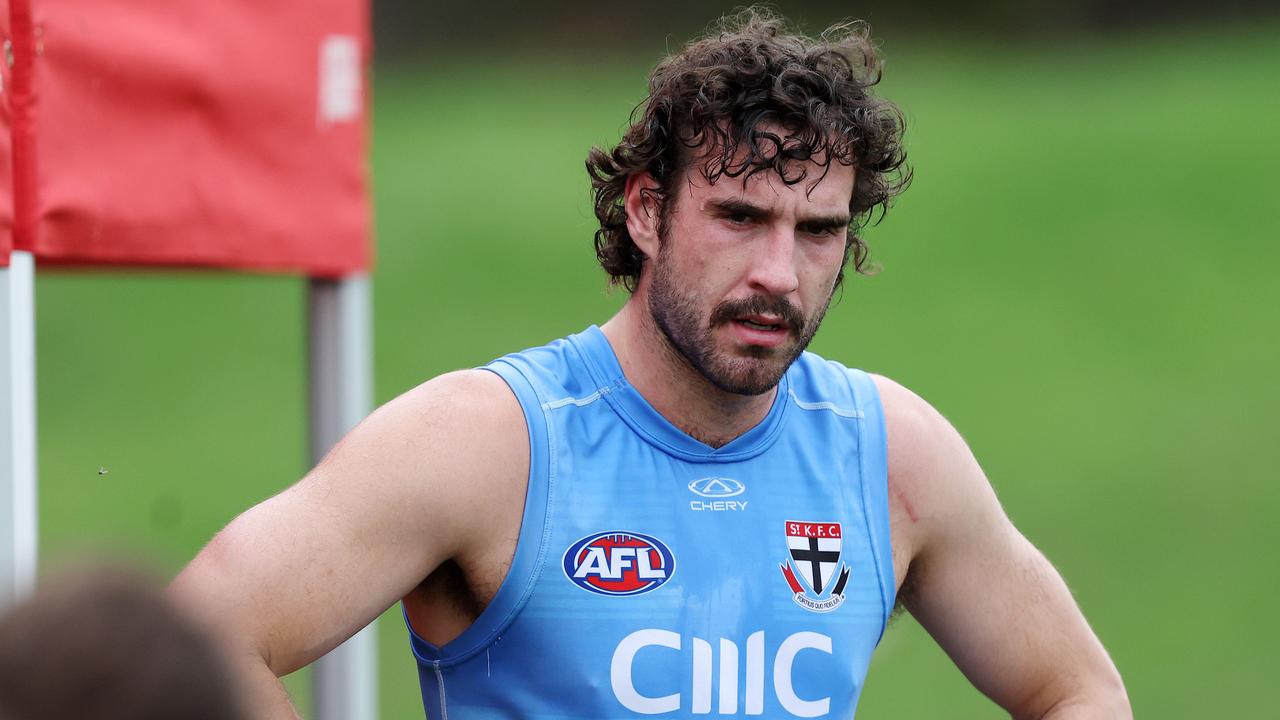Australian Football Hall of Fame: SANFL great Jack Oatey elevated to legend status
When the Australian Football Hall of Fame moved to recognise more South Australian legends, the numbers all pointed to one man. But that is just part of the story.

AFL
Don't miss out on the headlines from AFL. Followed categories will be added to My News.
Visionary. Father figure. Thinker. Disciplinarian. Star player. Teacher. Winner.
Jack Oatey was all of those things in South Australian football during a career spanning more than 40 years.
The 10-time premiership coach and former state captain now has another title bestowed upon him: Australian Football Hall of Fame legend.
On Tuesday night, Oatey became the third South Australian to receive the honour, joining North Adelaide champion Barrie Robran (elevated in 2001) and Woodville, North Melbourne and Crows great Malcolm Blight (2017).
Oatey’s first premiership captain at Sturt, John Halbert, says no one is more deserving.
He describes Oatey’s achievements, which includes coaching 521 wins from a whopping 786 games at Norwood, West Adelaide and the Double Blues between 1945-82, as incredible.
The race to the 2021 Toyota AFL Finals Series is on and every match matters. Watch Live & Ad-Break Free on Kayo. New to Kayo? Try 14-days free >
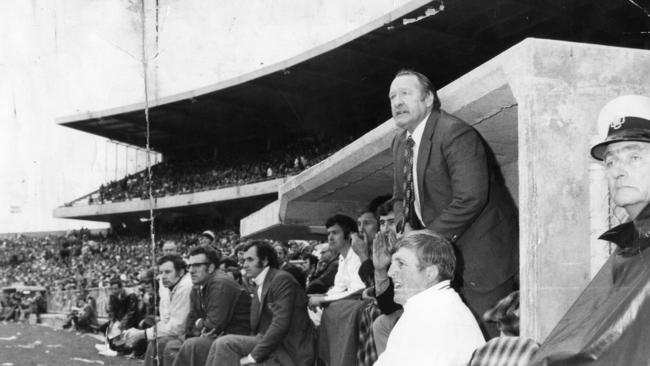
“When you look at the group of legends who are currently named, Jack’s record stands very well against any of those former coaches in terms of number of games he coached, number of premierships he achieved, the fact he was able to do it moving to different clubs,” says Halbert, himself a 2017 inductee into the Australian Football Hall of Fame.
“When you’re looking at CVs that include playing at all levels, coaching at the top levels and being player/coach … there isn’t anything that’s better than Jack’s.
“I knew the AFL was looking to recognise more South Australians as legends and I wondered whether Jack might come up as one of those to be in that group.
“When I found out he was going to be elevated, I was absolutely delighted.”
Oatey is the 31st legend in the Australian Football Hall of Fame.
He was an inaugural inductee in 1996 — two years after his death at the age of 73 — when the Hall was formed to celebrate the VFL/AFL centenary.
Legend status is awarded only to select individuals considered to have changed the game significantly for the better.
Oatey began making his mark on SA football at Norwood, where he played 162 matches, kicked 218 goals and won five premierships — two as a player and three as captain-coach — from 1940-52.
As a non-playing coach at Sturt, he revolutionised the game while lifting the club from the doldrums to become a powerhouse that prevailed in five successive grand finals from 1966-70, then another two in 1974 and 1976.
Oatey came to the Double Blues after the 1961 campaign, when they finished bottom with a 3-16 record.
Taking over a young side, he helped Sturt dethrone SANFL juggernaut Port Adelaide, which had captured nine premierships in 12 years, by adopting an attacking game style centred on run-on handball and skilful players.
The Double Blues ended their 26-year flag drought with a 56-point victory over the Magpies in the 1966 grand final — a match they recorded 55 handballs to their opponent’s 11.
Oatey’s game style was in stark contrast to Port’s long-kicking approach under his great rival Fos Williams and his brother, Glynn Williams, who had been Sturt’s mentor before Oatey.
“Jack thought the way to counter Port Adelaide, which had been the dominant force in South Australian football, was by the effective use of handball and good development of skill,” Halbert says.
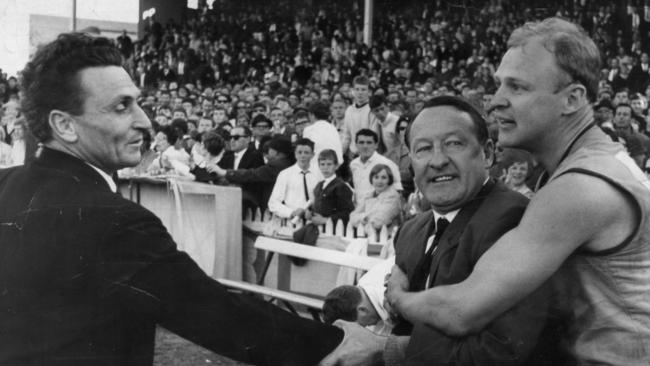
“Jack emphasised a need to use the ball quickly with handball, the old edict of give and take, give it first time, don’t hesitate, and, of course, we developed that game wonderfully well, and it was a very big factor of Sturt’s success.
“It changed the nature of the game dramatically.
“It was not just a revolution for Sturt, it was a revolution for the SANFL.”
Oatey helped to kickstart a national revolution by teaching his players the art of the checkside.
The Double Blues would spend close to half an hour to start most training sessions under Oatey taking shots from the pockets, near the boundary lines.
“Jack would demonstrate with his little kick — he’d only kick the ball 15 or 20 metres — then would ask you to continually practise it,” Halbert says.
“He was quite emphatic that the checkside should be used when you were in that predicament.
“Gradually it just took off and started to become more popular in SANFL and then, of course, Victoria peeked across the border and saw it was being used in South Australia effectively.
“Now, in AFL football, people don’t think twice about using it — it’s an automatic response when you get in those positions.”
Oatey expected every Sturt player bar one to use the checkside when kicking from tight angles.
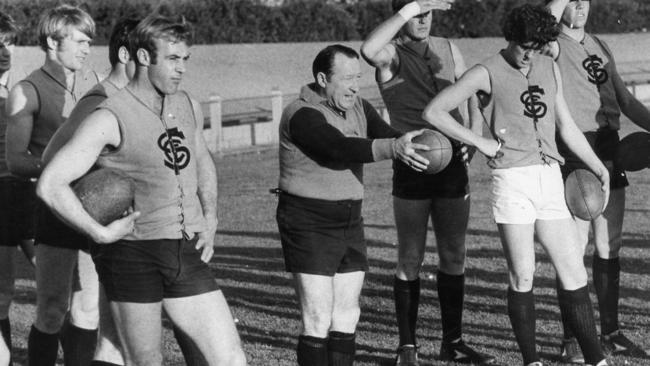
Full-forward Malcolm “Emmy” Jones was the exception.
“Emmy Jones was an absolutely marvellous kicker of the ball and on one particular night we were in the right forward pocket practising the checkside and he immediately started doing drop punts,” Halbert recalls.
“Jack was watching from the side and said ‘Emmy, why aren’t you trying the checkside?’ And he’d say ‘I prefer the drop punt’.
“So Jack said ‘show me’ and Emmy executed a couple very successfully, then he did the same from the left forward pocket.
“Jack was a bit taken aback by it and told the group ‘when you get in games, I want you to do the checkside from that pocket and the boomerang kick from that one, but Emmy Jones can please him bloody self’.”
Halbert, Sturt’s captain from 1962-68, says the players bought into Oatey’s tactics and teachings because he was a brilliant amateur psychologist.
“I don’t think he ever studied anything in that field but he had a wonderful knack of being able to work with young men … and got a very positive response from them,” he says.
“He was a great thinker about the game, of what worked in the game and what didn’t.
“I loved sitting in selection meetings with him, listening to his ideas and theories and thoughts about players.”

Along with Halbert, Sturt also produced champions such as Paul Bagshaw, Rick Davies, Brenton Adcock, Rick Schoff and Michael Graham under Oatey.
“By ‘66 there was a confidence we were the best side in the competition and we were going to win the grand final, and if we could keep the group together we’d have a pretty good future in front of us because many were still young men,” Halbert says.
“It was a wonderful time for Sturt.”
Former Norwood player Peter Oatey says his father, who also played five VFL games for South Melbourne in 1944 while in Victoria with the army in World War II, believed strongly in discipline, emphasising teamwork and honing skills.
“Everything was about the unit, your role in that unit and what you could do to be part of helping the team to win,” Peter tells the AFL.
“Maybe from his experiences in the war, but he always talked of ‘the unit’, and what ‘the unit’ could achieve.”
Peter says football was the central part of his father’s life outside of his family.
“He loved everything about it — the players he played with, the young men he coached in life and in football, the work it took to achieve something as a team, and just watching games and trying to always learn and be a bit better,” Peter says.
“In the house, when we would talk about how Sturt went that day and how we went that day for Norwood if we weren’t playing against each other, he would speak about teamwork, and use his photographic memory to recall each player’s exploits, good and bad.
“Paul and Rick would get a regular mention.”
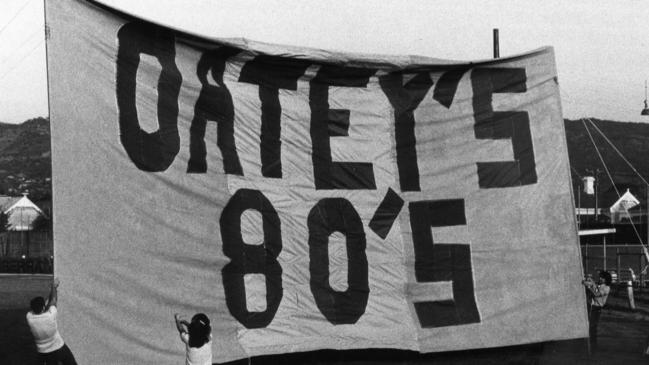
Peter calls his dad’s honour “a fitting tribute for someone who dedicated his life to the game and people in football”.
Raised in Maitland on the Yorke Peninsula, Oatey’s SANFL career began after one of SA football’s significant sliding-doors moments.
As a 17-year-old, he trialled with the Magpies – the club that would become his and Sturt’s fierce rival – but they told him he was not required, so he went back to the country.
Eventually Oatey returned to Adelaide and signed with Norwood after impressing a Redlegs official in a country curtain-raiser at Adelaide Oval.
“I think Sturt are very thankful that (joining Port) didn’t happen and Norwood would be too, and also West Adelaide look back of Jack’s time with a great deal of affection,” Halbert says.
Oatey’s elevation to legend status is the latest in his long list of accolades, which also include being captain-coach of Norwood’s Team of the Century, coach of Sturt’s, being a member of the SA Football Hall of Fame, captaining SA and receiving an Order of Australia for services to football.
His son Robert is also in the SA Football Hall of Fame and Norwood Team of the Century after a distinguished coaching and playing career with the Redlegs.
Halbert says Oatey would be tickled pink if he learnt of being formally classed as a legend.
“But he wouldn’t tell you that or wouldn’t show that,” he says.
“He’d say ‘there should be other people getting this, not me’.
“It’s a pity he’s not alive to actually enjoy it.”
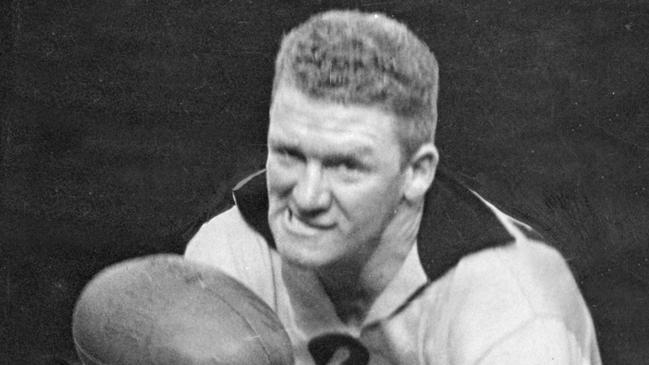
The WA legend who had all of Australia in awe
Former Collingwood great Frank Murphy thought he had unearthed a football gem during a World War II services game on a makeshift ground on the island of Morotai in late 1945.
In blistering heat, in the most unlikely of locations, and in a game including a handful of one-time VFL stars who had sacrificed their footy careers to help fight the Japanese, the tireless performance of a relatively unknown ruckman commanded attention.
The big man’s name was Merv McIntosh.
Immediately after the match, Murphy sought out the 22-year-old to ask him if he would be interested in joining the Magpies after the war.
McIntosh politely declined the offer. He had played some senior WAFL footy with Perth before enlisting on his 19th birthday and intended to resume with the club on his return to Australia.
He would do much more than that.
Almost as if he was trying to make up for the four seasons he had lost while in the army, this powerfully built, deceptively agile ruckman would build an enviable record across the next decade, winning three Sandover Medals, seven Perth best and fairests, three Simpson Medals and a Tassie Medal as the most outstanding footballer at the 1953 interstate carnival.
All the while he remained fiercely loyal to his native state, towering over WA football as well as annually repelling lucrative offers from Victoria and Tasmania.
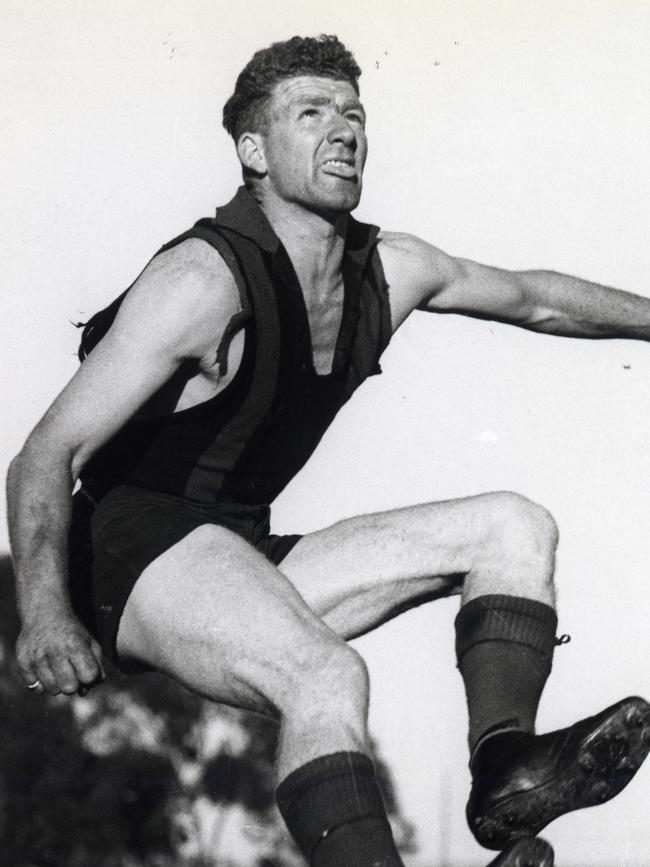
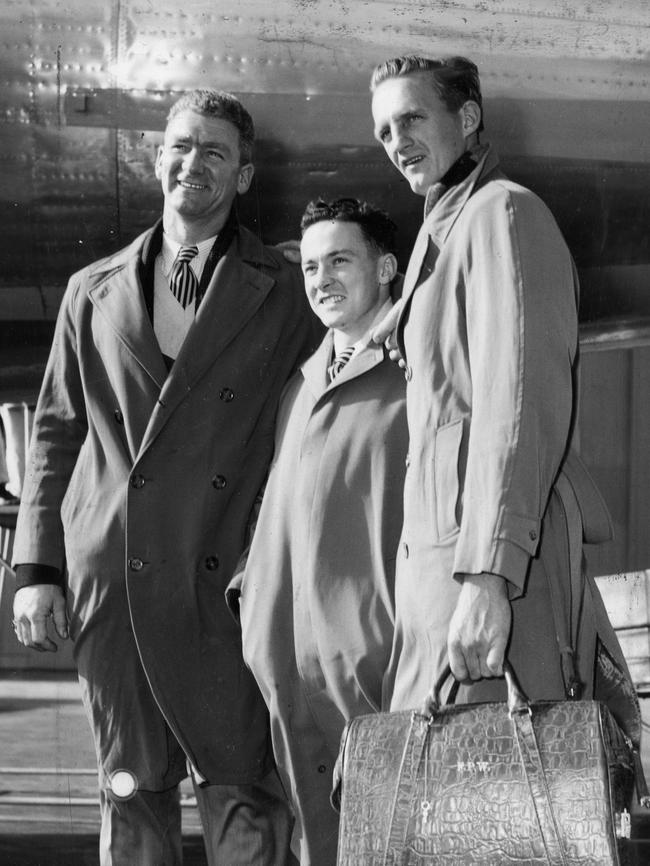
The influence of the genial giant known as ‘Big Mac’ (he stood almost 197cm and weighed just under 100 kilos) transcended state boundaries, even in the pre-television age.
This was best illustrated when just a few years after that 1945 services game the normally parochial Melbourne-based Sporting Globe anointed him as Australia’s best footballer.
No one dared to argue to the contrary.
Five decades later McIntosh would be among the original intake of football greats named in the Australian Football Hall of Fame in 1996.
But his greatest honour came on Tuesday night – almost a century after his 1922 birth and just over a decade after his death in 2010 – when he was finally elevated to Legend status.
His eldest daughter, Kaye Vallance, described her father as a humble champion who loved his family and his football – in that order.
“We are so honoured as a family that he has finally been recognised as a legend,” she said. “He was a gentle giant. He played the game hard and he played to win. He was always competitive but he was a fair player. He wasn’t someone who went round biffing people.
“He was always honoured to get the accolades that he did.”
McIntosh was a raw 16-year-old when he debuted for Perth seniors in 1939, showing good promise from the outset.
But the war intervened, as it did for so many young Australians.
He signed up and spent four years in the Australian Army, serving mainly in New Guinea.
On his return from war, he resumed his job as a motor mechanic in his father’s Cannington garage and reclaimed Perth’s ruck mantle.
In his first season back in 1946, he finished third in the Sandover Medal and won the first of his seven Perth best and fairests (including an incredible five in a row immediately after his return from the war).
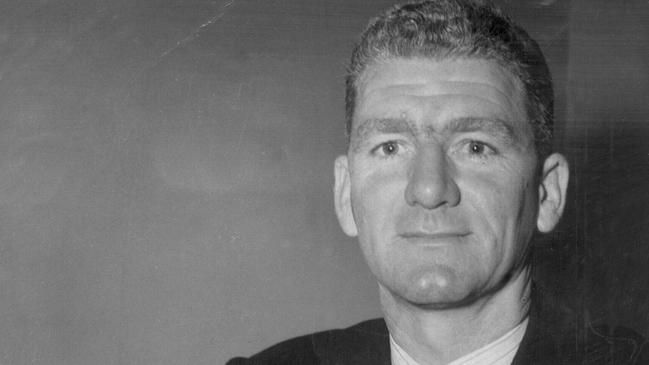
The following year he was made captain of the club and of his state.
In 1948 McIntosh won the first of three Sandover Medals – he also won in 1953 and 1954 – and lifted Western Australia to a win over Victoria.
Such was his impact that leading sports journalist Hec de Lacy said in 1948: “Australia’s No.1 footballer is Merv McIntosh, giant WA captain … if I were looking for a player to blend into a crack Victorian club side, this is the man I would pick.”
“He’s a big hearted rather than refined footballer. He’s a born footballer and a born leader.”
Richmond’s Brownlow Medallist Bill Morris said of his state adversary: “I’ve played against the best of them in all states, and this fellow (McIntosh) is tops.”
Countless teams tried to lure him east, but his loyalty was resolute.
His daughter said: “The biggest offer he ever got was from Tasmania, but he loved Western Australia and was never going to leave. He also had a very successful business.”
McIntosh took over the running of his father’s garage before becoming an SP bookmaker long before the establishment of the TAB.
One of his finest moments came in 1953 when he won the Tassie Medal, a reward for his ruck dominance in the interstate carnival.
One newspaper recorded: “If the Tassie Medal award had been judged on courage alone, McIntosh must have received it, and throughout the carnival there was no fairer or better footballer … (he is) one of the greatest ruckmen Australian football has known.”
He worked hard to chase Perth’s first premiership since 1907, and had to wait until his final season of WAFL in 1955.
And it took his football genius and huge hands to make it happen.
Perth trailed East Fremantle in the 1955 Grand Final by 34 points at halftime before staging a third term fightback to get within two points at the last change.
The astute McIntosh – in his 217th and last game – was critical in the final term.
When Perth took hold of a narrow lead against a howling breeze, he parked himself in one of the dead pockets and tactically kept knocking the ball out of bounds.
“He was doing something he wouldn’t be able to do these days,” his daughter said. “He kept hitting the ball out of bounds, but it worked. They won (by two points).”
McIntosh retired from the game to spend more time with the six children he and his wife Betty had.
One of them, Jill McIntosh, became a star Australian netballer and coach, and he travelled all over the world to watch her play.
Those who saw Merv McIntosh play always knew he was a legend. Thankfully, it has now become official.

From homesick WA star to Tiger Hofer
In his first year at Punt Rd in 1979, West Australian star rover Robert Wiley was ‘a bit homesick’ and could have been shunted across town to North Melbourne.
His debut VFL season as a Tiger was plagued by injury and, when on the park, he was largely being played out of position.
Despite his ability and prowess as a goal-kicking rover, Wiley was in danger of joining a long list of non-Victorians who struggled to crack it in the VFL after moving from interstate.
“I came close to going to another VFL club at the end of 1979, because (then Tigers vice-president) Graeme Richmond was a very tough operator and he thought I wasn’t living up to what he thought,” Wiley said.
“I had a meeting with Ron Joseph at North Melbourne, and in the end nothing transpired and I didn’t end up moving.
“But it also made me determined and I was always taught by my parents to never give up and always keep fighting.
“Richmond was the side I wanted to show I could play good football, so it was a bit of a motivation as well to overcome that first year.
“And also as a West Australian, the pressure from the west to perform in the VFL was sometimes greater than the pressure from Victorians.
“I had in the back of my mind that I didn’t want to let down West Australians and the people that believed in me.”
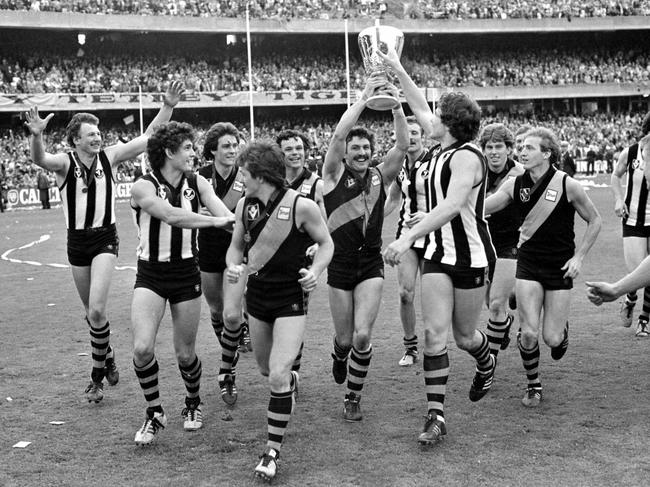
He didn’t.
A year later he became a premiership player after starring in Richmond’s 1980 grand final thrashing of Collingwood.
Wiley, who admits he’s watched the replay of the game about ‘30 or 40 times,’ said the day was reward for effort.
“It was an amazing day and an amazing year for me, as 1979 wasn’t fantastic,” he said.
“I probably got a little bit homesick, I had a couple of injuries and a hamstring ended the second half of my year.
“I wasn’t as fit and I made the decision to not work, and in those days training didn’t start until 5 so I became a little bit lazy and that sort of transferred into my football.
“I came back early to get my hamstring looked at and I trained harder than I’d ever trained, probably 12 or 13 times a week.
“I was able to show why they wanted to recruit me as that ball-getting, goal-kicking rover.
“And from 1980 to 1983 when I left, I was able to produce the football I knew I was capable of.”
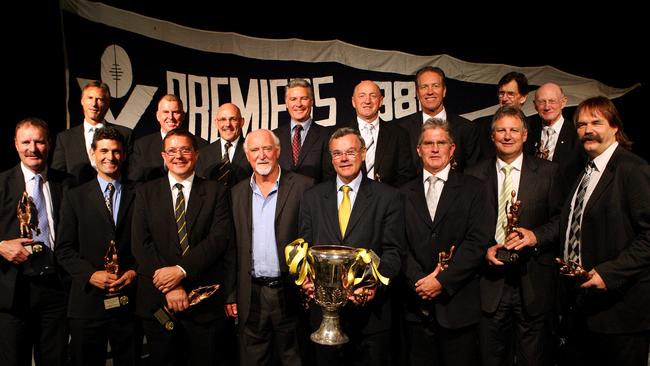
Wiley said the day itself was an experience he would never forget.
“On grand final day, there were 113,000 people there,” he said.
“It was a dream come true, the roar was unbelievable and it was everything a young boy had ever dreamt about watching on a TV on the other side of the country.
“As a kid, every Sunday we would all religiously watch ‘The Winners’ on the TV, which was the weekly highlights of the VFL.
“From an early age that was a dream or an aspiration that I wanted to get to by playing well in the WAFL.
“The feeling of winning a grand final, it doesn’t matter what grade it is because it’s the same feeling.
“But the VFL was the ultimate and the top of the mountain, so to be part of that was an amazing experience.”
Before reaching his ‘top of the mountain,’ Wiley had already established a strong career in the WAFL for the Perth Demons.
Born in Kalgoorlie and brought up in Manning by his parents and with three older sisters, he made his WAFL debut as a 19-year-old in 1974.
He played in premierships in 1976 and 1977, and returned to Perth in 1984 after becoming a premiership Tiger and narrowly missing a second VFL flag after being beaten by Carlton in the 1982 grand final.
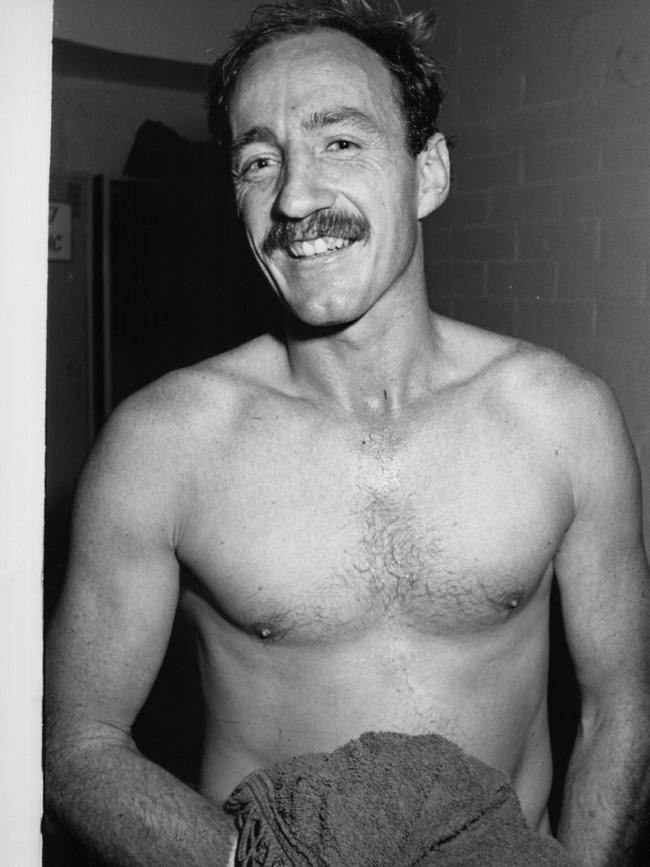

“I spent five years at Richmond and it was a toss-up as to whether I’d finish my career in Melbourne,” Wiley said.
“While I was making that decision and leaning towards Perth, my wife got diagnosed with cancer so it probably cemented that decision to head home so we could have support of family and friends while Marcie had to go through treatment.
“I also always wanted to return and play there.
“They were a club that gave me so much and I wanted to be able to repay them as much as I could.”
He did that and then some, winning eight club best and fairests with the Redlegs by the team he finished with Perth.
Little did he know he’d one day return to the VFL at the age of 32, as a foundation player of the newly formed West Coast Eagles in 1987.
“To be back in Perth and to go back into the VFL at 32 and to represent a new club was an amazing experience,” he said.
“It was also a completely different experience because at that time West Coast had no oval, no changerooms and everything we did was new.
“To be a part of that from day one, and to win 11 of our first 22 games, was fantastic.”

Wiley started his coaching career a year later, taking charge at his beloved Perth for two years before joining long-term friend, mentor and Richmond premiership teammate Mick Malthouse at West Coast as an assistant coach in 1990.
He stayed at the Eagles for 16 years and was involved as a coach in three of West Coast’s four flags, in 1992, 1994 and 2006.
Wiley also served as a senior development coach at Carlton under Malthouse before finishing up and heading home to Western Australia in 2015.
He’s a life member of Perth, West Coast, Richmond, and now a deserved AFL Hall of Fame inductee.
“Where does my heart lie? It’s a tough question, but being a West Australian and living in the west, it has to be West Coast,” Wiley said.
“They’re an amazing organisation, and like Richmond the support they gave my family through the death of my late wife Marcie was just amazing and words can’t describe what they did for me.
“It was really well appreciated.”
More Coverage
Originally published as Australian Football Hall of Fame: SANFL great Jack Oatey elevated to legend status



